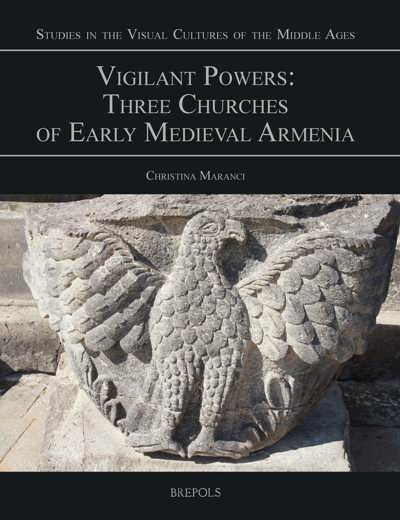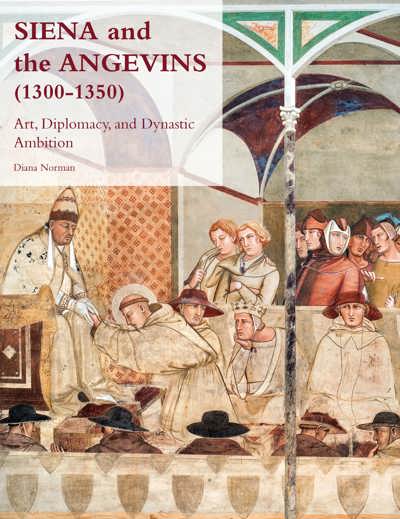
- Pages: 281 p.
- Size:216 x 280 mm
- Illustrations:126 b/w
- Language(s):English
- Publication Year:2015
- € 145,00 EXCL. VAT RETAIL PRICE
- ISBN: 978-2-503-54900-2
- Hardback
- Available
Winner of the 2018 'Karen Gould Prize' of the Medieval Academy of America, an award for a book or monograph in medieval art history judged by the selection committee to be of outstanding quality.
Winner of the National Association of Armenian Studies and Research (NAASR) "Sona Aronian Award" for best English-language monograph in Armenian studies published in 2015.
"Christina Maranci’s Vigilant Powers: Three Churches of Early Medieval Armenia is a closely-observed, beautifully written, and deeply evocative architectural analysis of a culture at a global crossroads. With meticulous scholarship, Maranci explores Armenia’s creative engagement with the Byzantine, Sassanian, and Umayyad empires, underscoring the fluidity of cultural frontiers between them." (Selection committee of the 2018 Karen Gould Prize in Art History, The Medieval Academy of America) "Frau Maranci ist mit diesem Buch eine beeindruckende Synthese gelungen (...) Es bleibt zu wünschen, dass sich interessierte Leser nicht vom stolzen Preis abschrecken lassen. Ich würde sagen, die Investition lohnt sich. Zumindest wird die Forschung an dieser Publikation nicht vorbeigehen können." (Peter Halfter, in: Armenisch-Deutsche Korrespondenz 170, 2016, 1, p. 55-58)
“As a specialist of Islamic architecture, I found Maranci's study well written, profoundly erudite, and a pleasure to read. While the finer points of Armenian epigraphy and sources escape me, it is nevertheless clear that specialists within Maranci's field will find a trove of material for further discussion, in tune with Maranci's arguments.” (Patricia Blessing, in The Medieval Review, 16.08.26)
« (…) la haute valeur de ce livre (…) constitue un apport précieux, non seulement à la connaissance de l’art arménien de l’Antiquité tardive et de la période préarabe, mais aussi à celle de la culture de l’Orient chrétien dans son ensemble. Ce travail se distingue par une profusion de données nouvelles, d’idées originales, de pistes à approfondir ; la richesse des informations permet de situer les œuvres étudiées dans la diversité et la complexité de leur contexte. Ainsi le but initialement affiche est entièrement atteint. Un grand soin est apporte a la rédaction et a la construction de l’expose, avec un souci constant de transitions, visant à soutenir l’attention du lecteur. Enfin, la qualité des photographies, en noir et blanc, confère à l’ouvrage une élégance austère, en harmonie avec la matière étudiée. » (Patrick Donabedian, dans le Bulletin Monumental, 2, 2017, p. 183)
“A review of this length cannot do justice to the multi-layered arguments presented by Maranci. She has succeeded in her stated purpose of presenting the three churches as both products of and symbols of their age.” (Levon Avdoyan, in the Journal of Ecclesiastical History, 68, 2018, p. 603)
“She offers a fruitful path to finally “stop chasing squinches across the plateau” (260) à la Strzygowski, and, instead, to delve into the transformation, diffusion, and development of traditions in Armenian architecture and beyond.” (Nicola Camerlenghi, in Speculum, 94/4, 2019, p. 1194)
This book opens to the reader the world of early medieval Armenia: its sacred landscapes, striking churches, and rich literary and religious traditions. Examination of three sculpted and inscribed monuments, produced during the "global" wars of the seventh century, demonstrates the close engagement of Armenia with Byzantine imperial interests and with contemporary events in the Holy Land. The dramatic context of the military frontier, and the apocalyptic expectations of its contemporaries, shaped a vibrant visual culture with ties to both the Byzantine and Sasanian worlds. The seventh-century monuments of Armenia are important not just as an extraordinary moment of local cultural production; they fill a crucial gap in our knowledge about the medieval traditions of the Christian East at a time from which little survives from Constantinople and the imperial heartland. Vigilant Powers is the first English-language book devoted to the subject.




